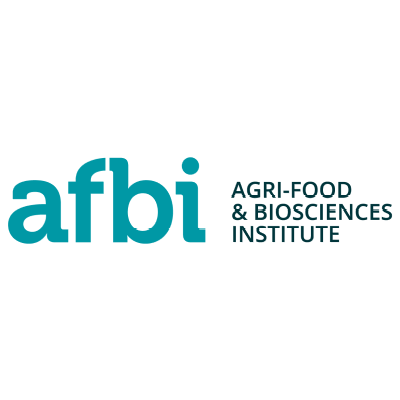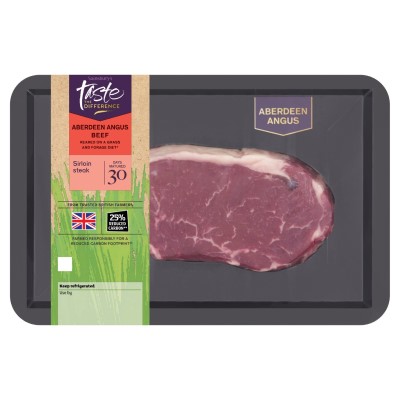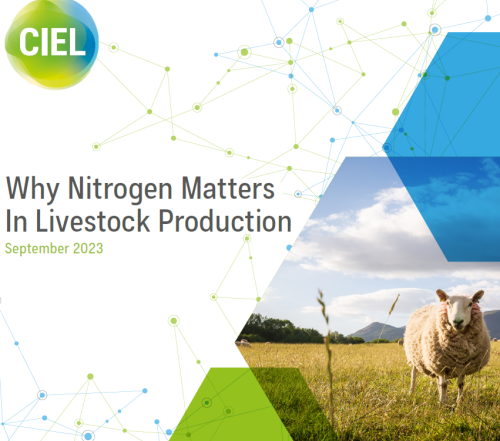CIEL | News: AFBI investigates three versus five cut silage systems: effects on cow performance
Improving the quality of grass silage offered to dairy cows can improve profitability by increasing cow performance and enabling lower concentrate inputs.
Given that silage digestibility (D-value) declines by an average of 3.3% for each one-week delay in harvest date, silage quality can be improved by harvesting herbage earlier, or more frequently. In a recent AFBI study comparing silage made within a 3- and 4-cut system, cows offered silage made within the 4-cut system had a higher dry matter (DM) intake, milk yield and milk fat + protein yield, and an improved margin over feed costs, compared to those offered silage made within the 3-cut system.
Following on from this work, the current study, which was part of a DAERA and AgriSearch co-funded project, investigated the impact of producing silages within either a 3-cut or 5-cut system.
The study
Grass silage was produced within either a 3-cut or 5-cut system during 2021. Cutting dates are detailed in Table 1. Total nitrogen application (sum of nitrogen from both slurry and protected urea) was 250 kg N/ha for the 3-cut system, while the 5-cut system received 270 kg N/ha due to a longer growing period. Grass was rapidly wilted within all harvests (5 – 28 hours, depending on weather conditions), with a target dry matter of 28 – 30%. Grass at all harvests was treated with a bacterial inoculant at ensiling.
Table 1. Harvest dates for the 3 and 5 cut systems
| 3 Cut | 5 Cut | |
| Harvest 1 | 17th May | 30th April |
| Harvest 2 | 28th June | 1st June |
| Harvest 3 | 23rd August | 29th June |
| Harvest 4 | 10th August | |
| Harvest 5 | 7th September | |
| Average regrowth period | 49 days | 33 days |
The silages were then offered in order of harvest to 34 mid-lactation Holstein cows (including 4 heifers) during a 21-week feeding study, and individual cow intakes and performance recorded. A commercial 16% crude protein concentrate was offered to both treatment groups at a rate of 12.0 kg/cow/day over the first 15 weeks of the study, being reduced to an average of 7.0 kg/cow/day for the remainder of the study.
Outcomes
Impact on silage yield and quality
Total silage DM yields for the 3-cut and 5-cut systems were 12.9 t DM per hectare and 11.2 t DM per hectare, respectively. Mean silage composition across all harvests is presented in Table 2. While mean silage DM content was 28.8 and 27.7 % with the 3-cut and 5-cut systems, respectively, the range in DM across all harvests ranged from 22.7 to 43.8%. Silage crude protein and metabolisable energy contents were higher in the 5-cut system, reflecting the shorter re-growth intervals with this silage system.
Table 2: Mean composition (across all harvests) of silages produced within the 3- and 5-cut systems
| 3-cut | 5-cut | |
| Dry matter (%) | 28.8 | 27.7 |
| D-Value | 67.9 | 71.9 |
| Metabolisable energy (MJ per kg DM) | 10.9 | 11.5 |
| Crude protein (% DM) | 13.1 | 15.2 |
| Neutral detergent fibre (% DM) | 41.3 | 34.1 |
| pH | 3.9 | 3.9 |
| Ammonia N (% total nitrogen) | 6.8 | 6.3 |
| Lactic acid (% DM) | 10.9 | 10.3 |
Impact on cow performance
Mean cow performance is detailed in Table 3. Cows on the 5-cut system had a higher silage DM intake (+2.4 kg per day) than those on the 3-cut system which resulted in a higher milk yield (+1.6 kg per day). However, neither milk fat content nor milk protein content were significantly affected by the silages offered. Cows on the 5-cut system had a greater fat plus protein yield (+0.14 kg per day) which was due to their higher milk yields. The higher milk solids yield of cows offered the 5-cut silages is directly related to their increased energy intake (a consequence of higher silage intakes and the silage having a greater metabolisable energy content). Silage production system had no effect on average body condition score (average 2.5) or cow body weight.
In this study, harvesting silage five times during the season increased the average D-value of the resultant silage by 4 percentage points compared to the 3-cut system. In general, this level of increase in D-value would be expected to result in a 1.1 kg per day higher silage DM intake and 1.3 kg per day extra milk yield. In this study the increase in silage DM intake was higher than expected, while the lift in milk yield was similar to what was expected.
Table 3. Performance of cows offered silages produced within either a 3- or 5-cut silage system.
| 3-cut | 5-cut | % difference between 3-cut and 5-cut | |
| Silage DM intake (kg per day) | 11.7 | 14.1 | +20.5% |
| Milk yield (kg per day) | 31.9 | 33.5 | +5.0% |
| Fat content (%) | 4.80 | 4.77 | |
| Protein content (%) | 3.51 | 3.59 | |
| Fat + protein yield (kg per day) | 2.64 | 2.78 | +5.3% |
Margin over feed costs
The impact on margin-over-feed costs of moving from a 3-cut to a 5-cut system will be largely dictated by silage cost, concentrate cost and the value of milk produced. Silage production costs (per t DM) will be higher within a 5-cut system, as many field operations (fertiliser application, mowing, tedding, rowing, harvesting) and yard operations (filling, rolling, sealing of silos) have to be repeated two extra times, and many contractors charge ‘per acre’, irrespective of yield.
Full economic costs of silages produced were assumed to be £150 and £199/t DM within the 3-cut and 5-cut systems, respectively (excluding feed-out costs). This cost takes into account a ‘land charge’, reseeding costs, variable costs of growing a grass crop, and assumes contractor charges for the complete harvesting operation. The costs also take account of the fact that grass DM yield was 1.7 t DM per hectare lower with the 5 cut system, and this will have increased the cost of each tonne of silage produced. Concentrates were assumed to cost £390/t, while a milk price of 40 pence per litre (adjusted for compositional bonuses) was also assumed.
Total feed costs were £1.00 higher per cow/day with the 5-cut system due to the increased cost of the silage offered. However, the value of milk produced per cow was also higher (£0.64 per cow/day). Margin-over-feed costs were £10.63 and £10.53 for the 3-cut and 5-cut system respectively. In this scenario, the 5-cut system did not improve margin-over-feed costs compared to the 3-cut system, mainly due to the reduced DM yields associated with the multi-cut system which increased the overall cost of the silage. However, it is important to note that these costings are based on a single study and one year’s worth of data.
Table 4. Calculated margin-over-feed cost within the 3-cut and 5-cut systems1
| 3-cut | 5-cut | |
| Cost of silage (£/cow/day) | £1.76 | £2.80 |
| Cost of concentrates (£/cow/day) | £4.11 | £4.07 |
| Total feed costs (£/cow/day) | £5.87 | £6.87 |
| Value of milk produced (£/cow/day) | £16.50 | £17.40 |
| Margin-over-feed per cow | £10.63 | £10.53 |
1Costs of 3- and 5-cut silages were calculated by CAFRE and AFBI and reflect 2023 prices
Practical Implications
Within this study, all silages within both systems were offered to milking cows, whereas in practice farmers target the highest quality silages to animals with the highest nutritional requirements. This targeted approach to offering silage allows producers to make efficient use of the forages available on-farm.
The reduction in herbage yield, together with the higher intakes associated with the 5-cut system will increase land requirements and silage costs. While silage quality and individual cow performance were improved with the 5-cut system, the system is not without its challenges. Producing high quality multi-cut silages requires attention to detail as grass must be harvested within a relatively narrow time-window to maintain digestibility. This can be challenging given the high reliance on contractor usage within Northern Ireland. Also, in order to achieve a satisfactory fermentation, which can be challenging in grass harvested at an earlier growth stage due to higher nitrogen levels, adequate wilting is necessary. Therefore, the short-time window for harvesting in order to maintain digestibility must coincide with suitable weather conditions for wilting, which can be difficult in our rainy climate! On a positive note, cutting silage earlier in the spring and later at the end of the season may reduce competition for the contractor. Also, herbage harvested within a 5-cut system will have a faster rate of wilting than herbage harvested within a 3-cut system due to the lower yield at each harvest.
Conclusion
Offering silage produced under a 5-cut system increased silage DM intake, milk yield, and milk fat + protein yield, compared to silage produced under a 3-cut system. However in this study, due to lower herbage yields with the 5-cut system, which contributed to higher silage costs, there was no improvement in margin-over-feed costs.








